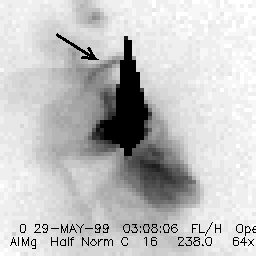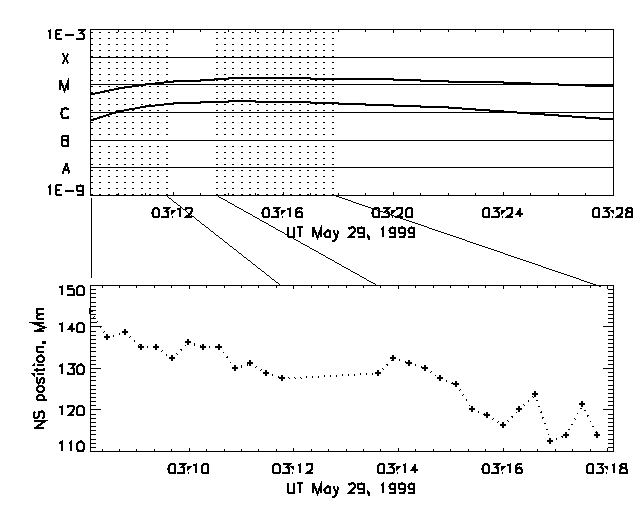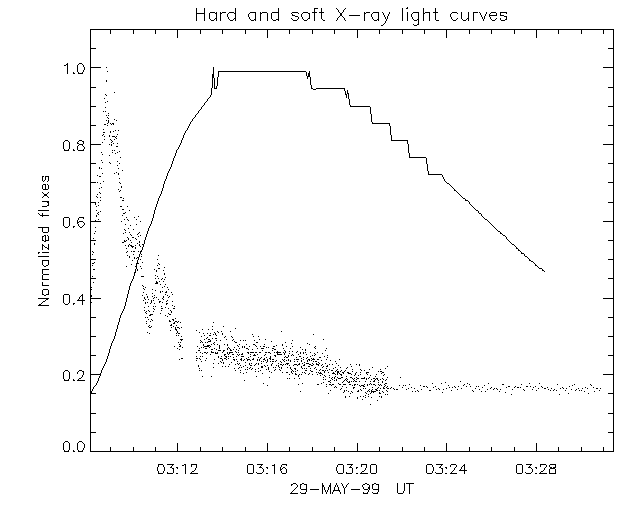
As is well known, a solar flare consists of an extravagant collection of energetic phenomena - radiation, particle acceleration, expansion, coronal mass ejection, etc. This lavish display needs a source of energy, and all hands (almost) agree that it must come from magnetic energy stored in the corona and released by some process of unstable relaxation. So that's fine, but in the fine array of phenomena we observe, we seldom if ever see any evidence for the extraction of the energy from the field.
To some of us this evidence would be the collapse or implosion of a part of the coronal magnetic field, on the hypothesis that stressed field must expand. Where this collapse takes place would be an excellent guide to the source of flare energy. Please skim through some of the ideas in the Grand Archive of Cartoons and see if you can see where the collapse must occur - it is obvious in the 2D reconnection models, but these only arguably explain only the gradual phase of a flare, not the eruptive phase. But our greybeards don't all agree on this one.
A clear case of collapse
The image below shows, marked with an arrow, what we think is a clear case of collapse towards the core of a flare. It does not particularly resemble the flow fields seen in spiky post-flare arcades.

Here the arrow points to the feature in question. To the left of the image, radially outwards from the Sun for this east-limb event, a violent eruption has taken place, and the image above shows the wispy legs of the ejected loops.
Quick analysis - does this look right?
Although the feature is faint, we have many images of it owing to a relatively slow motion. So let's see how this motion compares with the flare development:

The lower panel shows the NS position on a reference point in the inward-moving feature. The measurements were done hastily on fuzzy images, and the result is not so beautiful - we have no reason to think that the motion is not smooth. However this is probably good enough to show the time range of the motion and its scale. It's about 50 km/s, in the NS projection, and it does not coincide with the impulsive phase of the flare very well. Another way to see the latter point is via the Neupert-effect plot below:

which more explicitly shows where the non-thermal energy release is (note that this interpretation often meets with skepticism, for no good reason that we can see). Here we have the main energy release before 03:12, but no reflection of this in the motion of the collapsing feature.
Conclusion
Do we conclude from this example that we've missed again and not spotted the energy source of the flare? Maybe, but maybe not! A single example of anything hardly proves very much; also, we have no real theoretical predictions to lean upon here. One could easily imagine a violent implosion deeper in the core of the flare, and our relatively gentle inward motion might be indirectly related to this. In any case it is a remarkable observation! We see so many things flying outwards during a flare that even skimpy evidence for inwards motion, as with the SADs (Supra-Arcade Downflows, an observation we're most pleased with) opens new doors for interpretation.